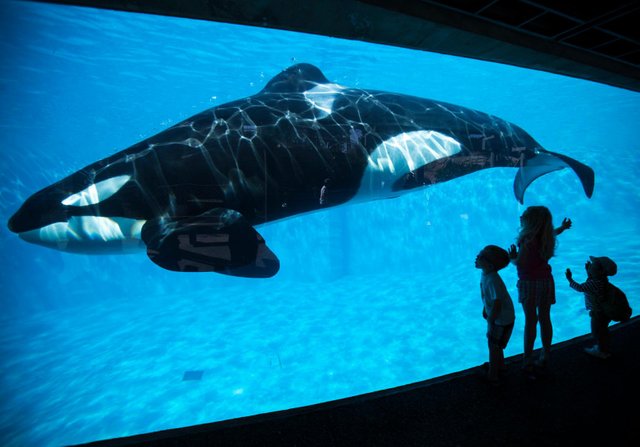
The 2013 documentary Blackfish sparked public outcry over SeaWorld’s treatment of orcas, also known as killer whales, and the theme park has been suffering ever since: The loss of $1.7 billion in market capitalization the year of the film’s release, plummeting attendance, and the loss of corporate partnerships. But the company’s better-than-expected financial performance this week suggests it has been able to ride out the storm of an epic PR disaster.
Growing attendance and surging shares
From January to July this year, SeaWorld reported 900,000 more guests visiting its 12 parks than during the same period last year, and second-quarter revenue rose 5% to $391.9 million. Considering that SeaWorld experienced a net loss of $175.9 million last year but has already reported an income of $22.7 million for the second quarter of 2018, it’s safe to say that the park’s future is looking brighter. Shares leaped by 16.8% after the quarterly earnings were released.
SeaWorld’s interim CEO John Reilly attributed the company’s recent gains to Sesame Street-themed events and free beer promotions, but its orca shows are still its flagship asset.
Killer whales are still performing in captivity
After Blackfish, SeaWorld buckled under intense public pressure and ended its orca breeding program. But its current lineup of orcas stayed on the job, even as the theatrical orca shows are phased out in favor of “new, inspiring, natural orca encounters.” The controversial Shamu-style shows are still ongoing in some parks, although SeaWorld has promised to eliminate them entirely by 2019.
Even if this generation of orcas is the last, it will be a long time before SeaWorld runs out of killer whales. The average lifespan of is about 30 years for males and 50 years for females. While captivity can lower their age span, SeaWorld will still have decades before they have to give up killer whale exhibits entirely.
Human employees are also suffering
SeaWorld has laid off hundreds of employees every year since Blackfish was released. Just this week, another 125 people lost their jobs. SeaWorld spokesperson Travis Claytor told The Orlando Sentinel that the most recent layoffs were part of an effort to cut $50 million in expenses as the company undergoes a major restructuring, and to position the company for “continued growth and success.”
There was no specification about whether this cost-cutting is also related to the $4 million settlement that SeaWorld recently announced with the Securities and Exchanges Commission, in relation to allegations that it misled shareholders about the Blackfish effect—even as it appears to be ebbing.
Hi! I am a robot. I just upvoted you! I found similar content that readers might be interested in:
https://qz.com/1351720/seaworld-is-making-a-post-blackfish-comeback/
Downvoting a post can decrease pending rewards and make it less visible. Common reasons:
Submit